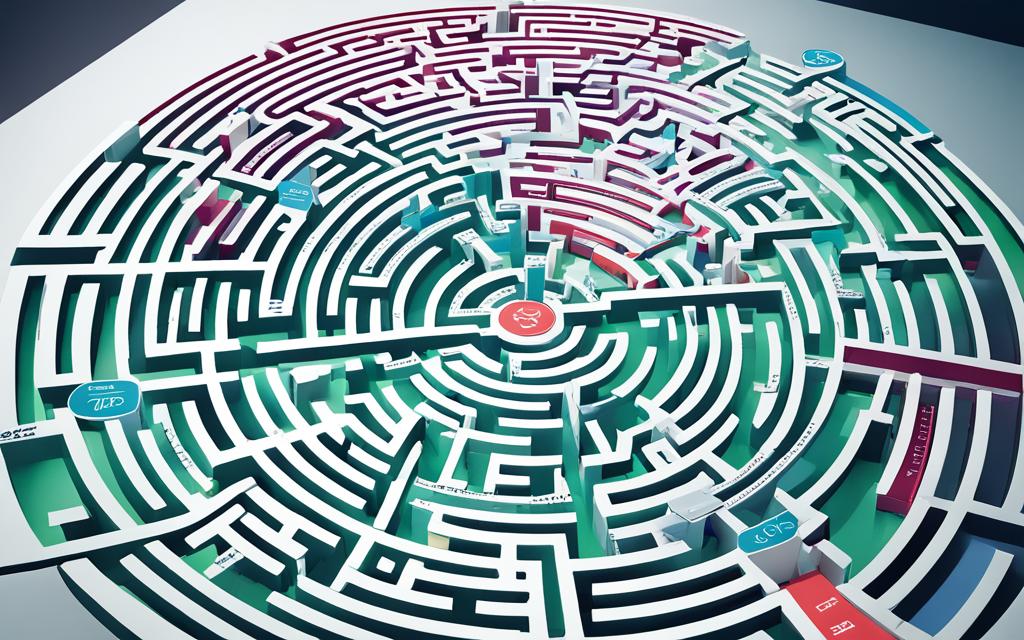Oppugning the User Interface: Rethinking UX Principles
User experience design principles have long been the guiding compass for creating exceptional digital experiences. Designers have adhered to established norms, ensuring intuitive interfaces and seamless interactions. But what if we challenge these conventions and push the boundaries of traditional UX principles?
In this article, we dare to defy convention and explore fresh perspectives on user experience design principles that can revolutionize the way users engage with products and services. By introducing innovative ideas and thought-provoking concepts, we aim to spark creativity and inspire designers to push the limits of what is possible.
Through this journey, we will dissect various aspects of UX design and shed light on alternative approaches that can elevate the overall user experience. From reimagining navigation and interactions to prioritizing accessibility and inclusivity, we will delve into unexplored territories that challenge the status quo.
So, fasten your seatbelts as we embark on this exhilarating ride, where we question the user interface, rewrite the rules, and redefine what it means to deliver a truly remarkable user experience.
Rethinking Navigation and Interactions
When it comes to user experience design, navigation design plays a vital role in ensuring a smooth and delightful user journey. A well-designed navigation system allows users to effortlessly find the information they need and seamlessly navigate through the interface.
One of the key factors in navigation design is creating clear and intuitive menus and buttons. These interactive elements act as signposts, guiding users to their desired destinations within the product or website. Thoughtful design choices, such as contrasting colors and easily understandable labels, can significantly enhance the user experience and reduce frustration.
Interactive elements like dropdown menus and search bars are invaluable tools that facilitate user exploration and discovery. By incorporating these elements into the interface, designers can enable users to efficiently narrow down their options or quickly find specific content. The placement and visibility of these elements should be carefully considered to maximize usability and engagement.
Another essential aspect of navigation design is user flow. Ensuring smooth transitions between screens and pages promotes a cohesive and intuitive user experience. By mapping out the user flow, designers can identify potential bottlenecks or areas of confusion and make necessary adjustments to optimize the journey.
Visual cues, such as progress indicators and breadcrumbs, provide users with a sense of orientation and progress within the interface. These cues reinforce the user’s confidence and understanding of their current position, enabling them to navigate effortlessly and focus on their primary goals.
“Good navigation design is like a GPS for your users, guiding them seamlessly from point A to point B.”
By rethinking navigation and interactions in user experience design, designers have the power to transform the way users engage with a product or service. Clear and intuitive navigation systems, interactive elements, and a well-planned user flow pave the way for a delightful user experience that keeps users coming back for more.
Prioritizing Accessibility and Inclusivity
When it comes to user experience design, accessibility and inclusivity should be at the forefront. Designers have a responsibility to ensure that their products are accessible to all users, including those with disabilities. By following accessibility guidelines and best practices, designers can create digital experiences that are inclusive and empower users of diverse abilities.
One important aspect of accessibility is providing alternative text for images. This allows users with visual impairments to understand the content of an image through screen readers. Additionally, using clear and readable fonts ensures that users with cognitive or visual impairments can easily consume the information on the interface.
Implementing proper color contrast is another crucial consideration for accessibility. By choosing colors with sufficient contrast, designers can make sure that text and important elements are easily distinguishable for users with visual impairments. This also enhances the readability and usability of the product for all users.
Inclusivity goes beyond accessibility and involves designing for all user groups and their specific needs. By adopting a user-centered design approach, designers can gain valuable insights into the diverse preferences and requirements of their target users. This allows for the creation of products that are intuitive, customizable, and tailored to meet the needs of a wide range of users.
By prioritizing accessibility and inclusivity, designers can not only comply with ethical and legal obligations but also create digital experiences that are engaging and effective for all users. User-centered design principles guide this process, ensuring that every user’s perspective is considered throughout the design journey. Ultimately, embracing accessibility and inclusivity in user experience design leads to products that make a positive impact on people’s lives.
FAQ
Why are user experience design principles important?
User experience design principles play a crucial role in creating engaging and effective digital experiences. By challenging traditional notions of the user interface, designers can redefine the way users interact with a product or service.
What is navigation design and why is it important?
Navigation design is the creation of clear and intuitive navigation systems that allow users to easily find information and navigate through the interface. It is important because it provides a seamless user experience and enhances the overall usability of a product.
What are some interactive elements in user experience design?
Some interactive elements in user experience design include buttons, dropdown menus, and search bars. These elements should be thoughtfully designed to provide a seamless user experience for the users.
How can user flow improve the usability of a product?
Considering the user flow and ensuring smooth transitions between screens can greatly enhance the overall usability of a product. By carefully mapping out the user journey and optimizing the flow, designers can create a more intuitive and user-friendly experience.
Why is accessibility important in user experience design?
Accessibility is important in user experience design to ensure that products are accessible to users with disabilities. Following accessibility guidelines and best practices, such as providing alternative text for images and using clear fonts, allows for a more inclusive and accessible experience for all users.
How does inclusivity play a role in user experience design?
Inclusivity in user experience design involves designing products that cater to diverse user groups and their specific needs. By adopting a user-centered design approach, designers can create inclusive experiences that are accessible and relevant to all users, regardless of their abilities.










